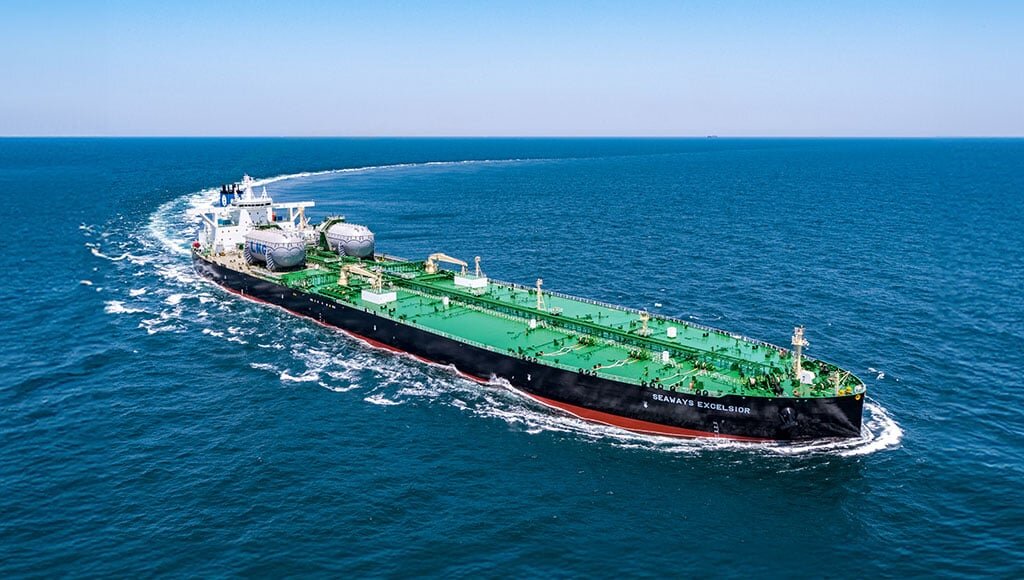While the delivery of newly built units to “blue-white” hands is continuous, the latest report from Xclusiv Shipbrokers also records a strong presence in tankers, bulkers and gas carriers, while overall the data indicates that the Greek orderbook increased further across all types, reaching 651 ships under construction.
According to Xclusiv, the global orderbook for containerships now stands at 32% of the active fleet in TEUs, compared to 24.9% in the corresponding period of 2024, with 463 new ships ordered in 2025 alone.
Greek shipowners have 111 ships under construction, representing approximately 10% of the global orderbook.
The largest concentration of Greek orders concerns neo-panamax containerships (48 ships or 43% of the Greek total).
This element reflects the shift of Greek shipping towards this specific market, where new prospects have been created.
The average age of the global container ship fleet reaches 13.8 years, with almost 47% being over 16 years old, a fact that reinforces the renewal dynamics.
At the same time, the orderbook to fleet ratio for containerships stands at 15.8% in number of ships, indicating one of the highest renewal rates among all segments.
Interest in feeder containerships is also continuous (39 ships – 35%), with the aging of the fleet being a key factor behind the expansion of the orderbook, as their average age has now reached 15.2 years – the highest level ever recorded for this specific segment.
Given that new environmental regulations continuously increase pressure on shipowners for more efficient and “cleaner” units, it is estimated that a large part of the existing feeder fleet will need to be replaced in the coming years, further boosting shipbuilding activity.
Indicatively, according to Greek and international chartering brokers, several moves by Greek shipping companies are recorded, adding more container ships to the orderbook.
The majority of deals for new containerships that were recently formalized concern -mainly- capacities from 1,700 to 3,200 TEUs.
Despite the spectacular rise in containerships, Greek shipowners maintain a strong presence in their traditional “castles”, namely tankers and bulk carriers.
In tankers, the orderbook now corresponds to 15.3% of the global fleet in DWT, compared to 13.2% last year, with 196 new ships ordered in 2025.
Greek shipowners have 285 ships under construction, i.e., 24% of the global orderbook – a percentage that makes them by far the market leaders.
Interest is focused on suezmax and LR2, which represent over 50% of Greek tanker orders.
Regarding bulk carriers, the picture is more stable but equally significant: the orderbook corresponds to 10.7% of the fleet (in DWT), slightly increased compared to 2024 (10.3%).
Greek shipowners have 156 ships under construction, i.e., 11.5% of the
global orderbook.
The majority concerns kamsarmax and post-panamax vessels, which combine high fuel efficiency with the capability to operate under “green” shipping standards.
Notable is the fact that after a barren first nine months of 2025, orders for new bulk carriers from Greek shipowners were activated in the last fortnight of October.
As “N” has reported since the middle of the previous month and onwards, at least five Greek-owned companies have signed orders for 13 bulk carriers.
On the gas carriers front, Greek shipowners maintain a strategic presence with a growth rate that exceeds the global average.
In LNG carriers, Greek orders amount to 55 vessels, that is 17% of the global orderbook, primarily in the 141k-200k CBM segment, which absorbs 89% of the new Greek projects.
The global LNG orderbook stands at 40% of the active fleet, showing that the market continues to invest dynamically in the bridge-fuel of the energy transition.
At the same time, in LPG carriers, Greeks have 44 vessels under construction or 14% of the global orderbook, with a strong presence in VLGCs (21 vessels) and MGCs.
The LPG market shows a steady growth trend, with the global orderbook reaching 37.6% of the fleet, as demand for propane and butane transportation is bolstered by Asia.





